Date and place
- July 5th and 6th, 1809 at Wagram, around the Lobau Island, fifteen kilometers north of Vienna, Austria.
Involved forces
- French army (131,000 men) under Emperor Napoleon the First.
- Austrian army (139,000 men) under Archduke Charles of Austria, Duke of Teschen.
Casualties and losses
- Grande Armée: around 37,000 men (5,000 killed, 28,000 injured, 3000 to 4000 prisoners) including General Lasalle.
- Austrian army: probably more than 40,000 men, including several generals, 10 flags, 40 guns.
The battlefield was located northeast of Vienna [Wien], in the Marchfeld plain
It was bordered to the west by the Gerasdorf
Archduke Charles of Austria stationed the troops forming his left wing on the escarpment while his right wing was spread out between the village of Wagram [Deutsch-Wagram]
July 5
Napoleon had been looking for a new passage on the left bank of the Danube
Around 9 p.m. that night, the Grande Armée crossed the northern sound of the river over three pivoting bridges from the eastern side of the Lobau island
Archduke Charles was waiting for the enemy around
The two armies, who had been in contact throughout the night, faced one another in earnest the next day, observed at the telescope by the Emperor of Austria, who for the occasion left his retirement in Wolkersdorf
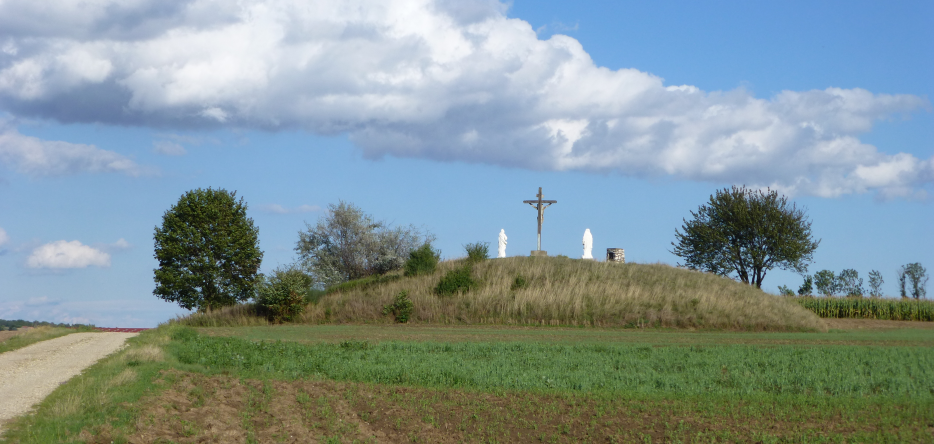
Marshal André Masséna, confined by an injury to a carriage, was in command of the left flank of the French troops in front of Aspern and Essling, while Marshal Louis-Nicolas Davout was on the right, around Glinzendorf
These two were able to act with a certain amount of freedom because there was a delay in communications between the flanks and the centre where Napoleon was in command [48.26846, 16.55839], north of Raschdorf [Raasdorf], with Marshal Jean-Baptiste Bernadotte and Prince Eugène de Beauharnais (accompanied by Étienne Macdonald).
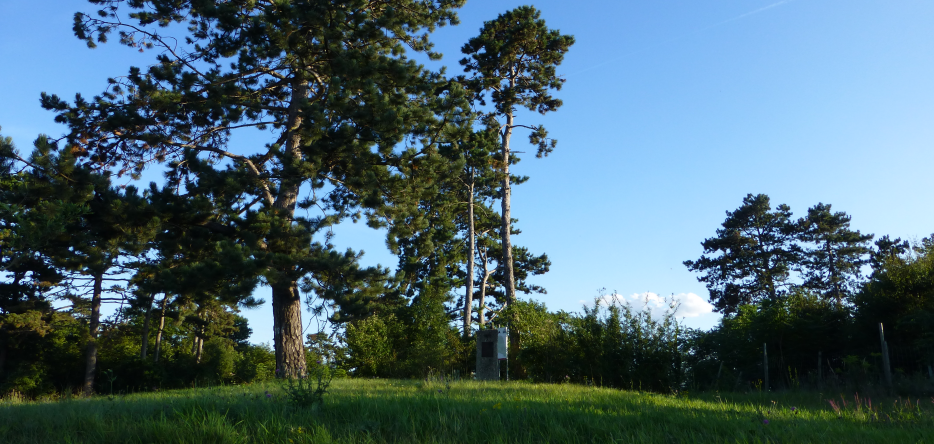
However, Napoleon was surprised by the square formation adopted by Archduke Charles in the plain
Macdonald broke through the enemy lines and Bernadotte managed to enter the village, but Archduke Charles rallied his forces and successfully pushed back the attack. In Baumersdorf [today Parbarsdorf]
Hard street fighting
July 6
During the night, the two sides reversed their formations. While Napoleon gathered his forces together, Archduke Charles spread his out along the two flanks, convinced that the troops on the Wagram plateau were capable of resisting any attack.
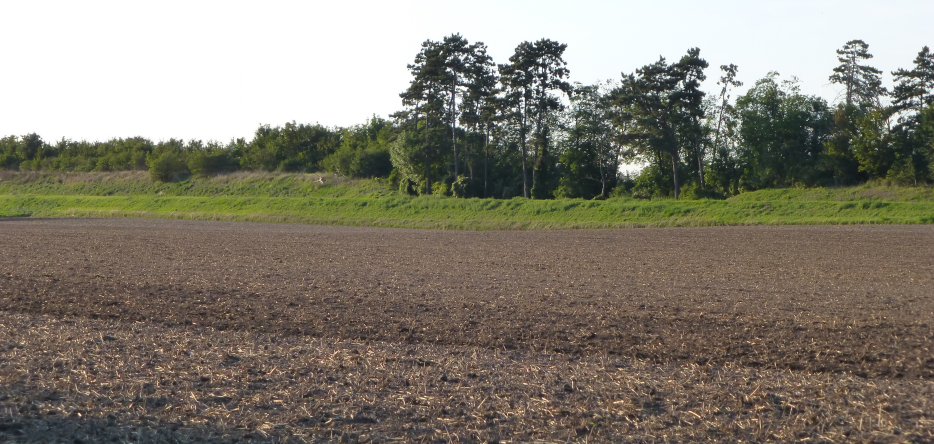
The next morning the Austrians went on the offensive. General Franz Seraph von Rosenberg-Orsini
By 9 a.m. this situation was developing rapidly;
- The French Army had been forced into a semi-circle between Aspern and Groshofen
Grosshofen , but Jean BoudetJean Boudet 's division on the far left of the formation was separated from the centre by such a wide gap that he was forced to retreat toward EnzersdorfGross Enzersdorf putting the Austrians in range of the French bridges over the Danube; - On the left, the Austrians had ceased their advance to avoid splitting up their force;
- In the center the entire plain between Wagram and Aspern was under heavy artillery fire.
Across the board, the Austrians were either advancing rapidly or in control of the situation.
Napoleon decided to send his central force into the battle. He ordered Macdonald's troops to march in battalion columns with the support of the Imperial Guard cavalry, Etienne-Marie-Antoine-Champion de Nansouty
The French continued to advance but the enemy's central force resisted. The two armies, unable to move, exchanged heavy blows with little effect.
However, Napoleon still had reserves to call upon while the Austrians had already committed all their forces to the battle. On the left, Masséna began to advance after receiving reinforcements. On the right, Davout launched an attack on the heights around the village of Markgrafneusiedl with generals Charles Antoine Louis Alexis Morand
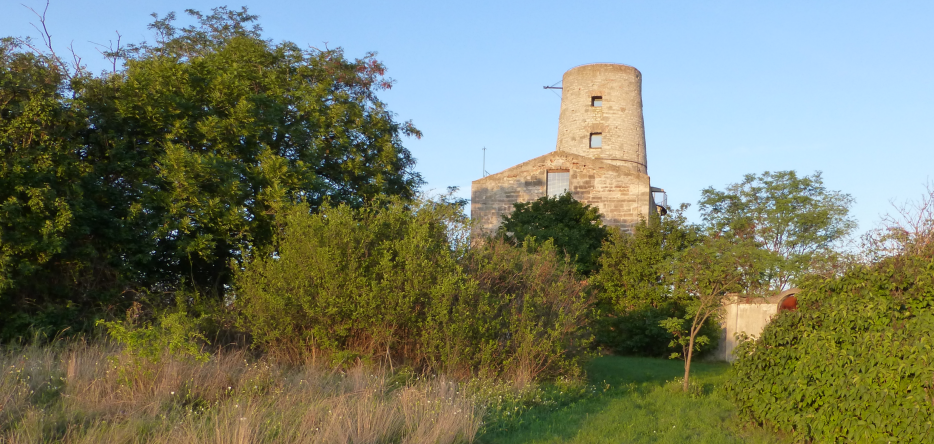
Despite heaving artillery fire and fierce resistance from the Austrians, Davout was able to gain a foothold on the Wagram plateau.
Seeing the Duke of Auerstaedt (Davout)'s success, Napoleon ordered Generals Etienne Macdonald and Nicolas Oudinot to launch a central attack at noon. Macdonal advanced toward Süssenbrünn
By 2 p.m. the French offensive had largely succeeded and the Austrian left flank had begun to pull back toward the road to Vienna at Znaïm [Znojmo]
Tried and disorganized, the French cavalry was unable to give chase. The Austrian withdrawal proceeded without incident despite the best efforts of Marshal Jean Baptiste Bessières which ended when the Marshal was wounded by a stray bullet and those of General Antoine Charles Louis de Lasalle who was killed in the confusion. However, the Austrian defeat did not turn into a rout.
At 5 p.m. Archduke John, who had been expected by the Austrians throughout the day, arrived with his army but was too late to influence the outcome of the battle. The French victory was confirmed and the Archduke had no choice but to follow his brother on the road to Vienna.
Map of the battle of Wagram
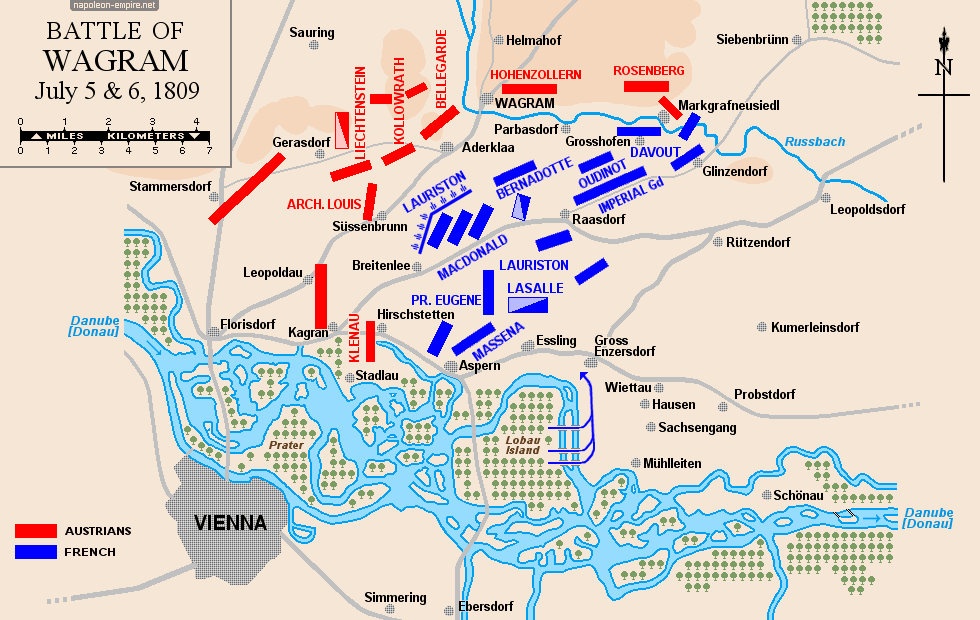
Picture - "Battle of Wagram, July 6th, 1809". Painted 1836 by Emile Jean Horace Vernet.
